Aluminum Forging
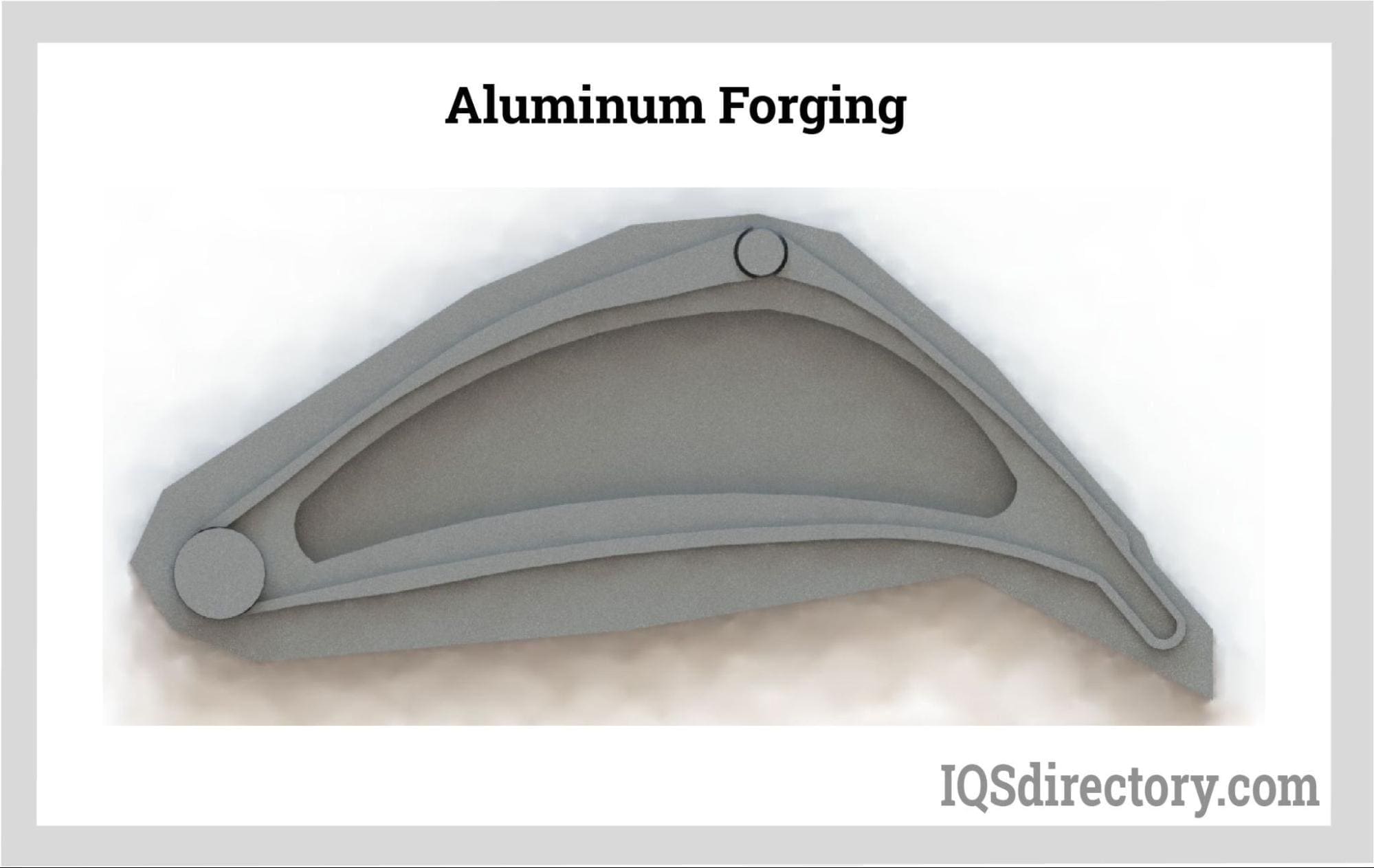
Aluminum forging is a method for processing aluminum alloys using pressure and heat to form high strength, durable products. The process of aluminum forging involves pressing, pounding, and...
Please fill out the following form to submit a Request for Quote to any of the following companies listed on
This article takes an in-depth look at rolled ring forging.
You will learn more about topics such as:
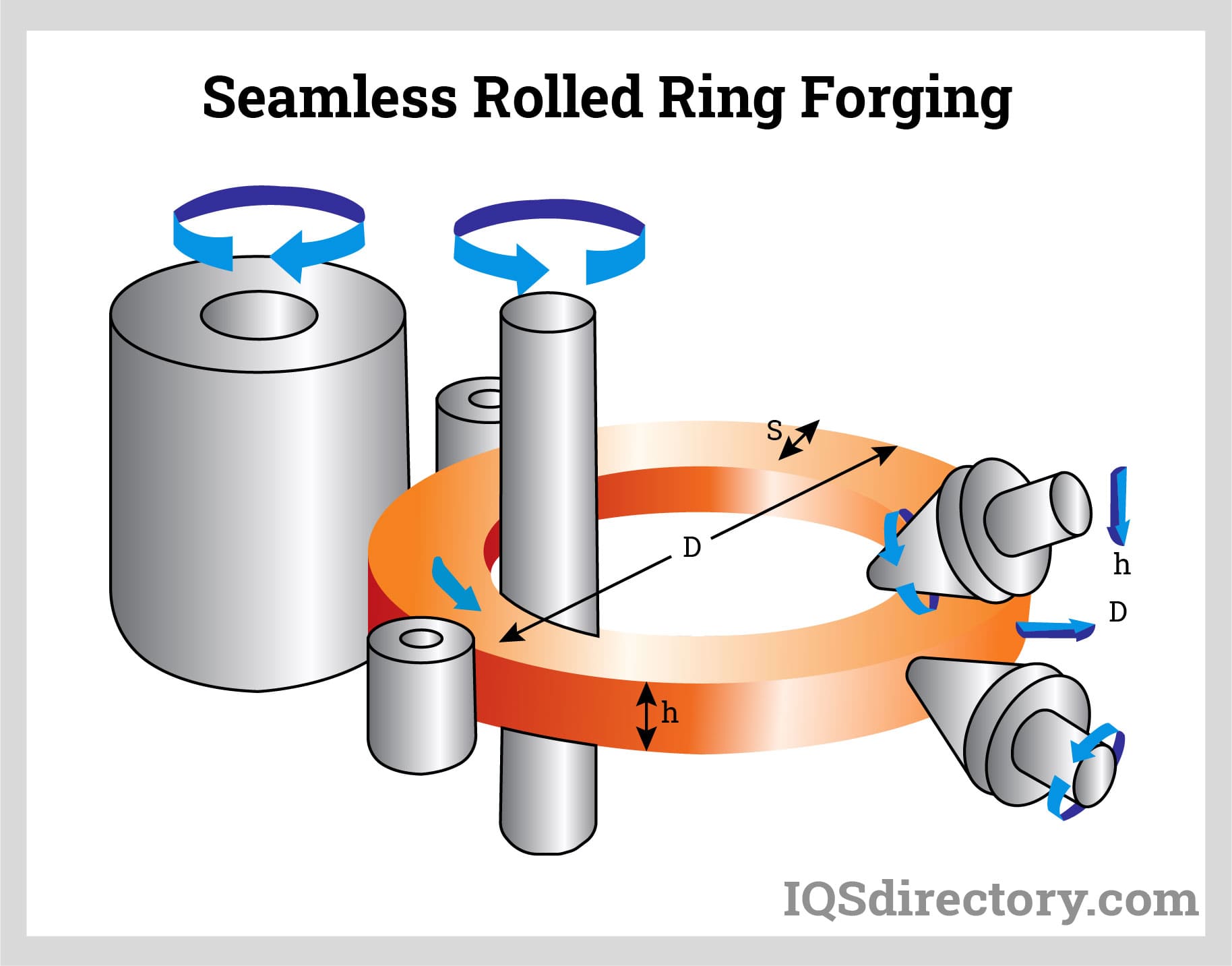
Rolled ring forging is a technique in metalworking that begins with a circular, pre-shaped metal piece. This initial piece is upset and then pierced to form a doughnut-like shape, also known as a torus. It is then heated to a temperature above its recrystallization point and positioned on a mandrel or idler.
The idler guides the pierced doughnut configuration toward a drive roller, which rotates consistently to reduce the torus's wall thickness while expanding its inner and outer diameters evenly. This process ultimately results in a product known as a seamless rolled ring.
The rolled ring forging method allows the production of seamless metal rings in a variety of sizes, ideal for applications in machine tools, turbines, pipes, and pressure vessels. This technique substantially enhances the mechanical attributes of the forged metal and maintains its grain structure.
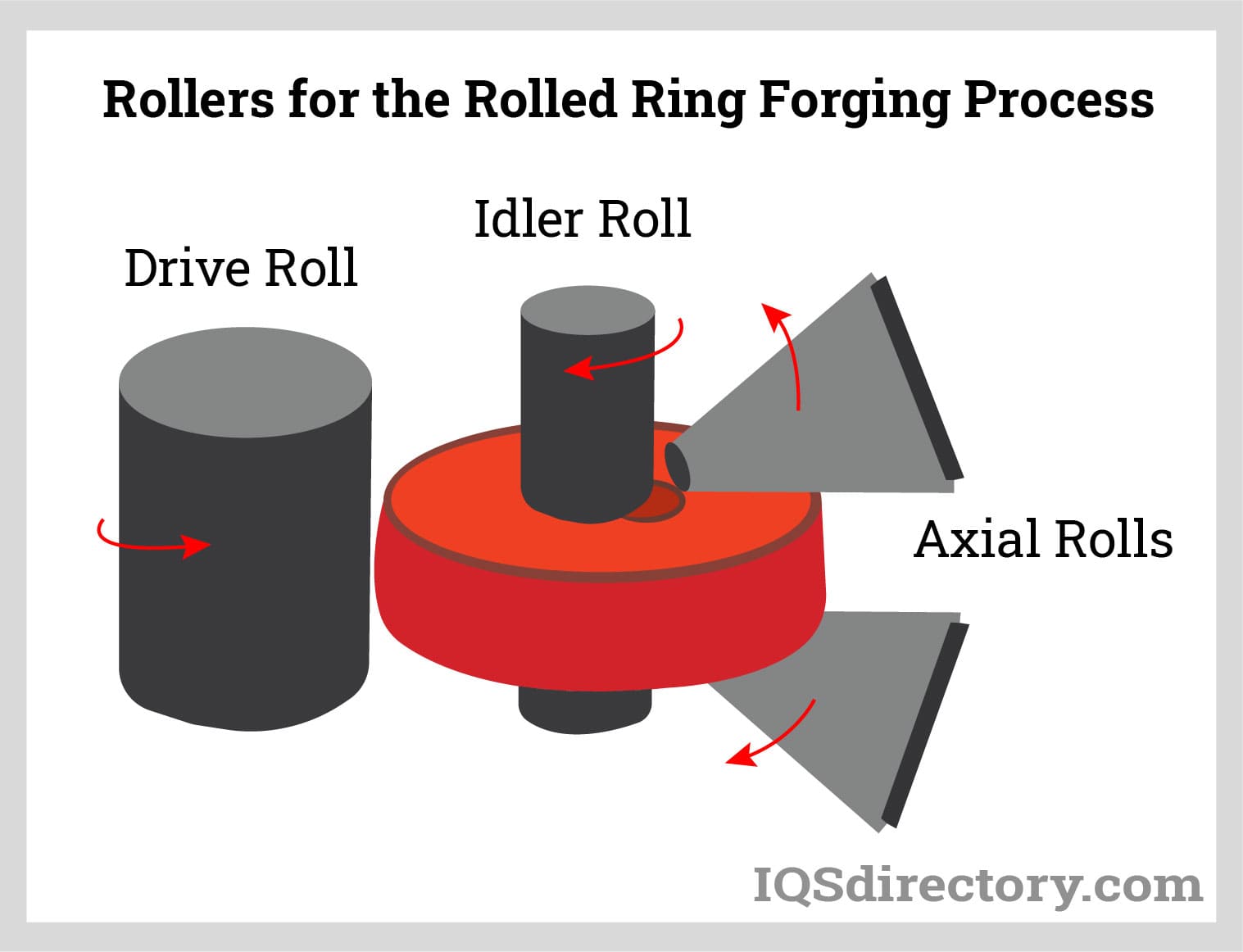
This forging process results in pieces with improved density and remarkably aligned grain flow. The forged rings range in weight from a few pounds to many thousands of pounds, with diameters spanning from a few inches to over twenty feet. Configurations include washer-like shapes and cylindrical forms. Wall-thickness-to-height ratios can vary greatly from 1:16 to 16:1, with larger ratios achievable through specialized forging techniques.
Rolled ring forgings most commonly have a rectangular cross-section. However, specialized tooling can produce custom shapes with detailed contours on both the inner and outer diameters.
As a form of open die forging, the rolled ring method involves a precisely cut, weighed, and rounded workpiece, allowing the upsetting process to achieve optimal structural integrity and directional grain flow. This open die forging method works the metal repeatedly, enhancing its strength, boosting its fatigue resistance, and removing any voids.
Rolled ring forging is a metalworking process renowned for its cost-effectiveness, flexibility, and the high quality of the final forged products. This advanced forging technique efficiently manufactures strong, durable metal components ranging from flat washers to large custom cylinders, with heights of up to two feet, diameters extending several feet, and weights exceeding six tons. A significant benefit of this process is the preservation of the metal’s grain structure, as the forging starts with a solid billet and no melting occurs, which results in superior mechanical properties, enhanced performance, and greater structural integrity in the finished component.
Minimizing raw material waste and allowing for the production of a wide range of ring sizes—including seamless rolled rings and flange rings—rolled ring forging is an ideal choice for precision metal forming and industrial production. Robust and cost-efficient, this method works with an array of alloys and materials, including stainless steel, carbon steel, aluminum, titanium, nickel alloys, copper, and specialty steels tailored for demanding environments. The primary rolled ring forging process, known as seamless rolled ring forging, produces forged rings that exhibit superior strength, toughness, and fatigue resistance compared to welded, machined, or torch-cut rings. For industries that demand exceptional reliability and high load-bearing capacity—such as aerospace, oil and gas, power generation, and heavy equipment manufacturing—rolled ring forging is the preferred manufacturing solution.
The initial stage of the rolled ring forging process involves selecting a billet—typically a solid cylindrical metal piece—and performing an upsetting operation. Upsetting modifies the billet by applying powerful compressive force, increasing its diameter, height, and cross-sectional area until it achieves the necessary dimensions for further processing. This step is generally performed using a hydraulic press, which delivers substantial horizontal pressure, causing the metal to spread along its length axis while also refining the grain flow for added strength.
During upsetting, the workpiece is heated to a plastic deformation temperature and compressed between upper and lower forging dies—a stage known as open die forging. Depending on the final application, upsetting can be performed either hot (for enhanced flow and ductility) or cold (for increased material hardness and surface finish quality). Heating the billet triggers changes in its internal grain structure, particularly when it reaches the austenitizing temperature; at this stage, the metal transitions to a face-centered cubic structure, imparting ductility and making it easier to shape under pressure, which is essential for forming critical rolled ring components reliably.
As a widely used forging operation, upsetting is used to quickly and efficiently form metal components such as the heads of bolts in the fastener industry. Upsetting machines utilize a horizontally moving ram to apply force against the billet, resulting in an increase in both volume and shape, and setting the stage for subsequent steps in the seamless ring forging process such as piercing and rolling.
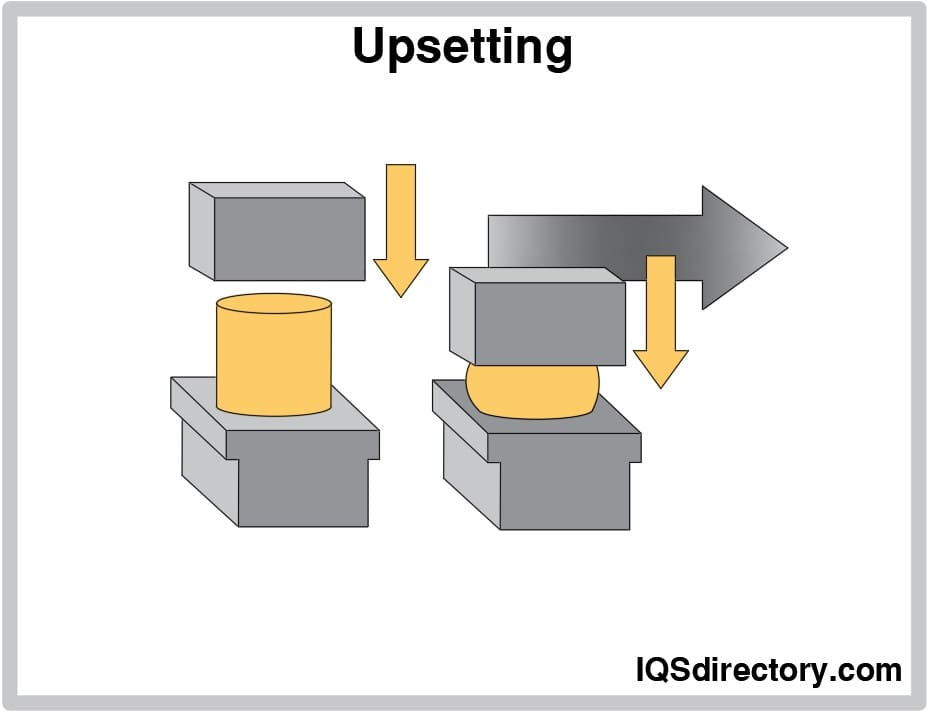
Following the upsetting operation, the forged billet undergoes a piercing procedure, a crucial step unique to seamless rolled ring forging. Piercing involves punching or shearing a hole through the center of the workpiece to form a doughnut-shaped blank, laying the groundwork for the subsequent ring rolling stage. The die and punch’s spacing is carefully chosen, based on workpiece thickness and alloy strength, to maintain optimal material properties and ensure efficient load transfer at the tool’s cutting edge during the punching process.
Unlike drill cutting or machining, forged piercing deforms the metal by pressing a punch through the heated workpiece, leaving behind a thin web at the base. This forging technology delivers enhanced core integrity by controlling grain orientation, which is vital for mission-critical applications that require high fatigue resistance, impact toughness, and long in-service life.
Common piercing techniques include lancing, shaving, cut-off, and parting-off. In seamless rolled ring forging, however, the preferred method is direct punching through the billet’s center. The extruded center is considered scrap, but is often recycled to reduce production costs and improve eco-friendly manufacturing practices, which appeals to companies seeking sustainable solutions in metal forming operations.
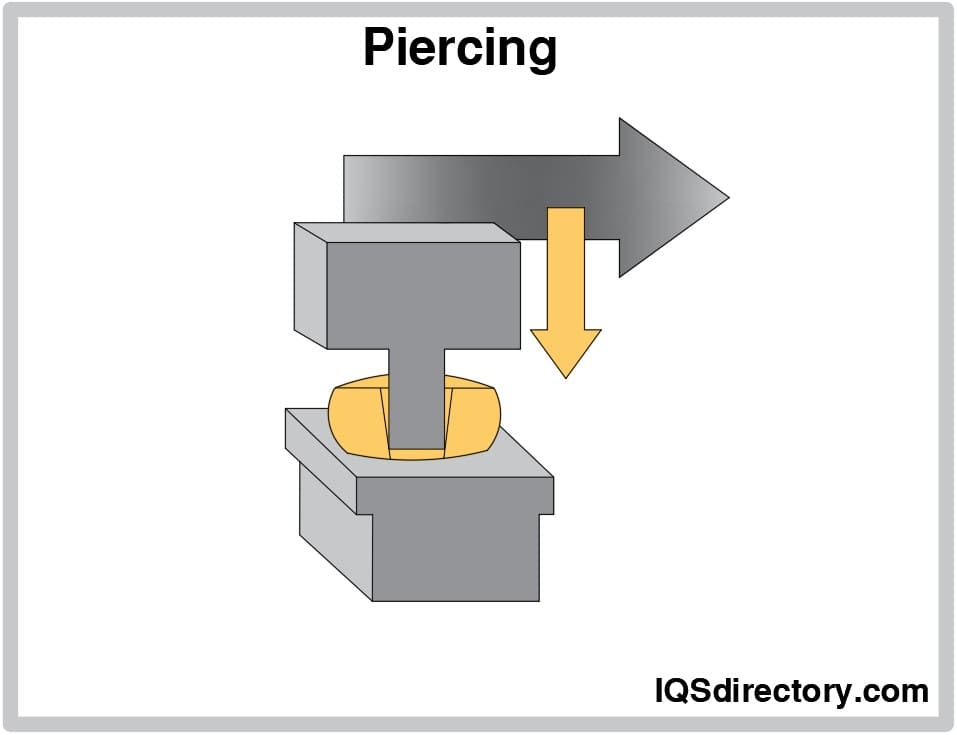
After piercing, shearing is applied to remove any remaining web and ensure a smooth internal diameter—critical for tight-tolerance ring forgings. This cold working process uses a dedicated punch or shearing tool to finalize the piercing, efficiently cutting away unwanted metal and preparing the blank for successful fitting on the mandrel or idler roller, a key consideration for high-precision industries such as aerospace, agriculture, defense, and power transmission.
The shearing tool, often rated for high-throughput industrial use, moves in a single stroke along the pierced hole, precisely removing the bottom web and creating a fully open, doughnut-shaped preform. This precise operation ensures the seamless ring will rotate smoothly over the mandrel and maintain perfect circularity throughout the forging and ring rolling stages. Proper shearing eliminates surface inconsistencies, reduces finishing time, and produces consistently shaped, high-quality forged rings suitable for a wide array of industrial applications.

The piercing and shearing operations result in a perfectly centered hole within the workpiece, making it possible to position the blank over the mandrel (also called saddle or idler). The mandrel—a robust steel or medium-carbon steel rod—is engineered to withstand heavy loads and persistent high-temperature operations typical in large-scale forging environments. Functioning as the internal shaping element, the mandrel is critical for achieving precise inner diameter tolerances in every forged ring.
Prior to placement over the mandrel, the preform is reheated to just below its recrystallization temperature to optimize ductility and flow characteristics. The blank is then gradually rotated and pressed against the main drive roller, which incrementally enlarges both the inner and outer diameters and reduces wall thickness, allowing for the exact customization of ring dimensions. This operation is essential in custom ring forging, flange forging, bearing races, and gear blank manufacturing.
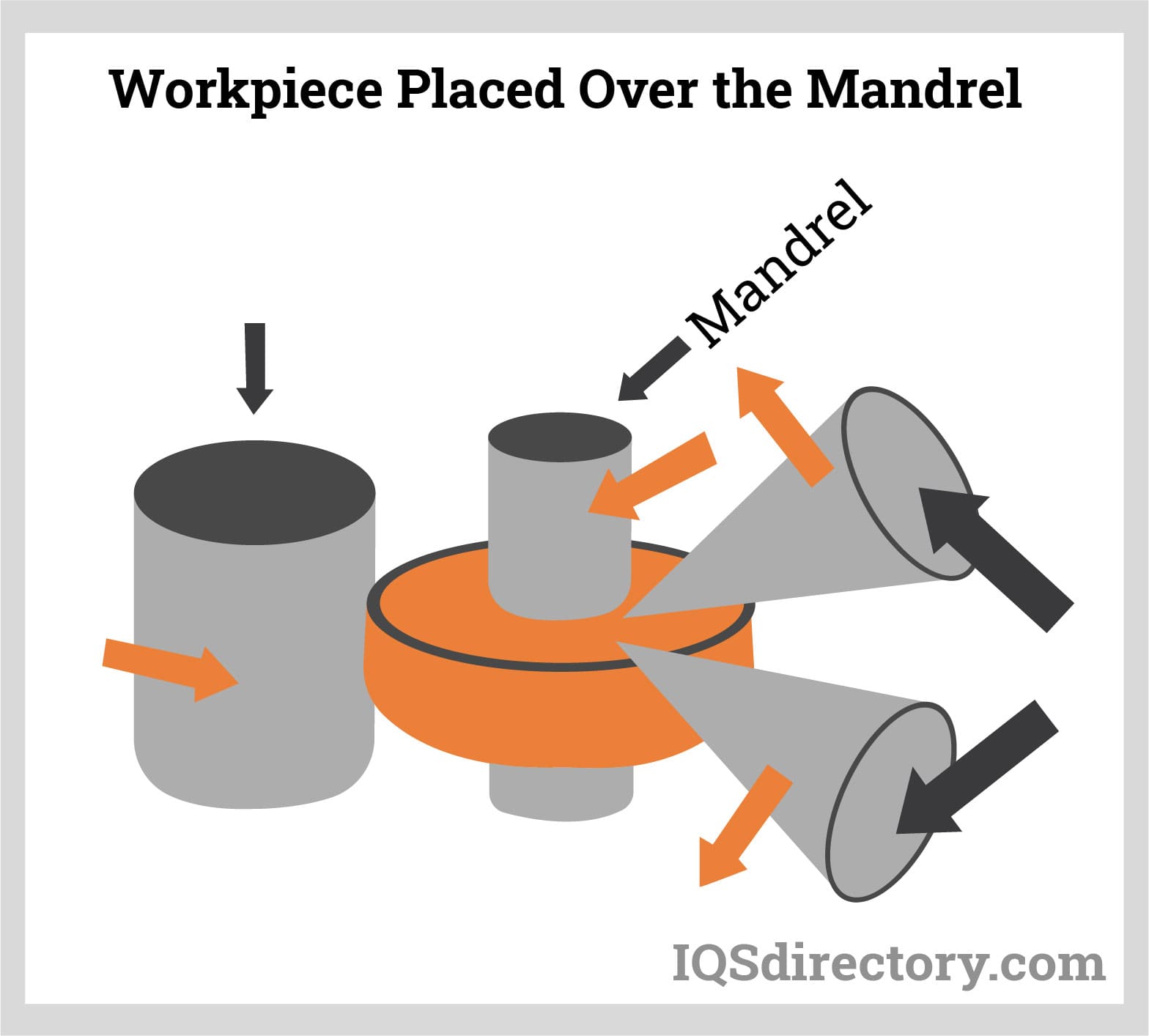
The main roller initiates the core shaping activity by rotating the preformed doughnut-shaped blank in conjunction with the mandrel, initiating the precise expansion of the ring's diameters and the thinning of its wall thickness. As the mandrel presses from within and the main roller applies external pressure, the workpiece’s material is uniformly distributed, resulting in optimal grain flow and exceptional metallurgical structure throughout the seamless rolled ring.
Refer to the diagram below for the location of the main roller (positioned left of the yellow workpiece) and the mandrel (embedded within and to the right). Precise, slow, and controlled movement during this seamless ring rolling process produces high-strength, defect-free rings that outperform conventionally manufactured alternatives. The result is a forged ring component with a tailored grain orientation, ensuring durability even in the most demanding service conditions.
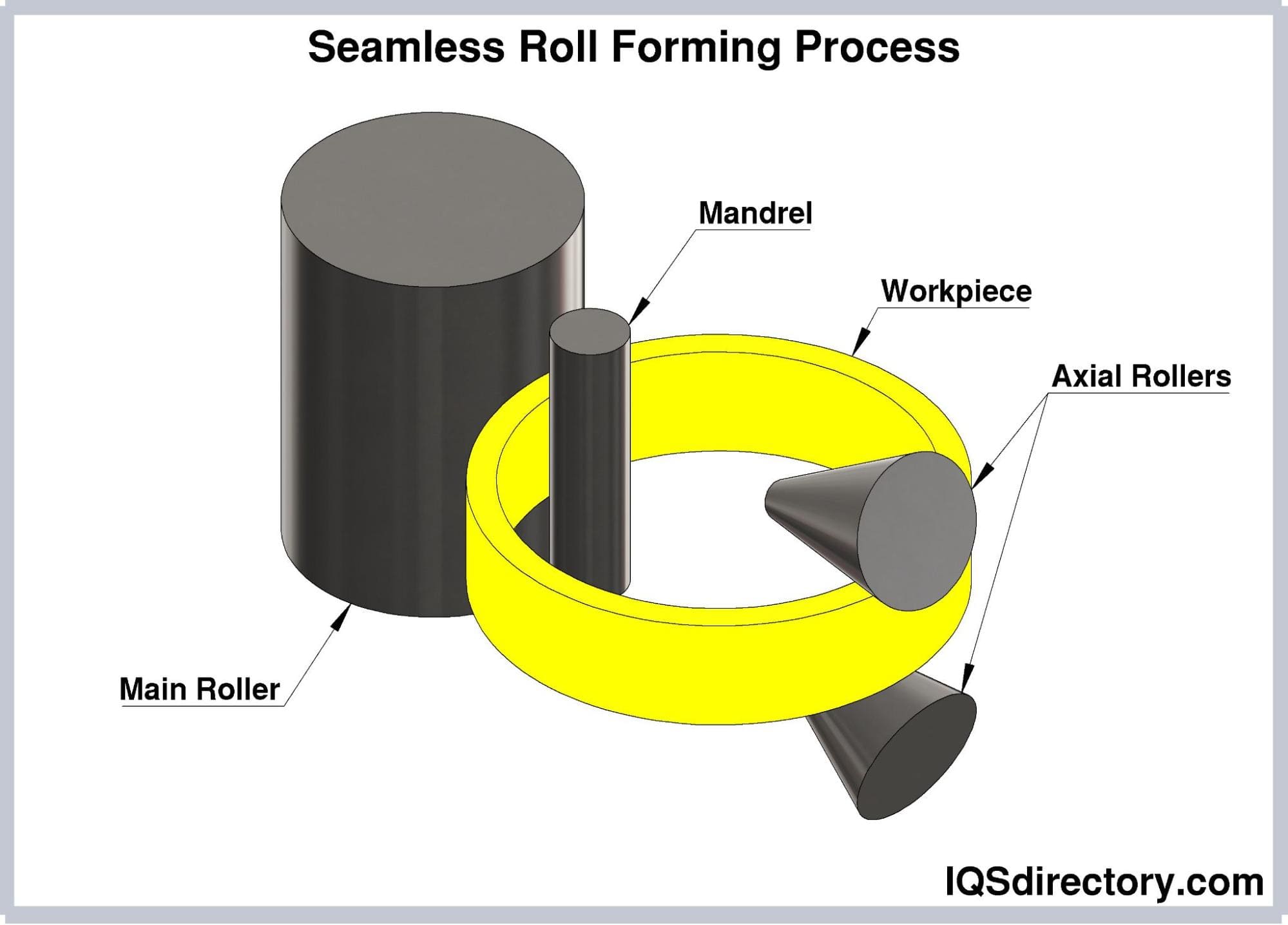
In the advanced stage of ring rolling, axial rollers are employed to compress and fine-tune the height profile of the ring’s cross-section. Positioned horizontally across from the mandrel and main roller, axial rollers exert downward force, gradually reducing the height of the billet while maintaining circularity and unity in the forged component. This deep integration ensures consistent cross-sectional thickness—an essential quality measure for industrial forgings, wind turbine rings, bearing races, and flange forgings.
Axial roller technology plays an influential role in the precision forging industry, strengthening the final forged ring’s dimensional accuracy, structural uniformity, and surface finish. Through synchronous movement with the idler and main roller, axial rollers impart the engineered final profile to the seamless rolled ring blank, cementing their indispensable status in modern forging facilities worldwide.
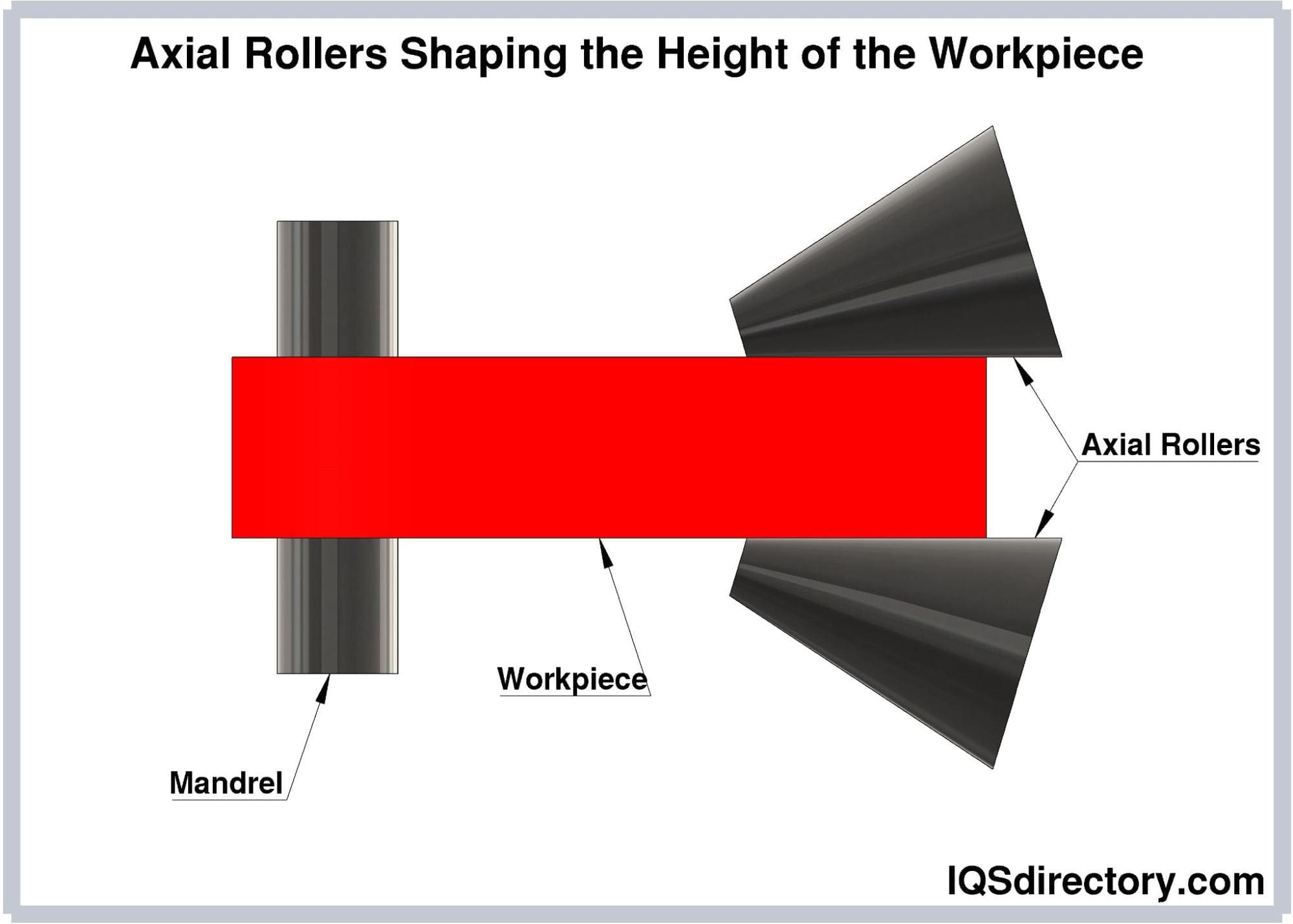
Rotation and forging continue until every dimension—inner diameter, outer diameter, and cross-sectional height—matches exact customer or industry specifications. The result of the seamless rolled ring forging process is a solid, uninterrupted ring forged without cutting, welding, or further mechanical processing, offering unmatched structural strength and metallurgical reliability.
Industries such as aerospace, power generation, heavy equipment, mining, automotive, marine, and oil & gas frequently specify seamless rolled rings for mission-critical parts like bearings, gears, turbines, pressure vessel components, flanges, windmill hubs, and chemical processing seals. By choosing seamless rolled ring forging, you ensure your components benefit from superior quality, extended service life, reduced maintenance needs, and consistent compliance with stringent industrial standards—delivering value at every stage from procurement through to end use.
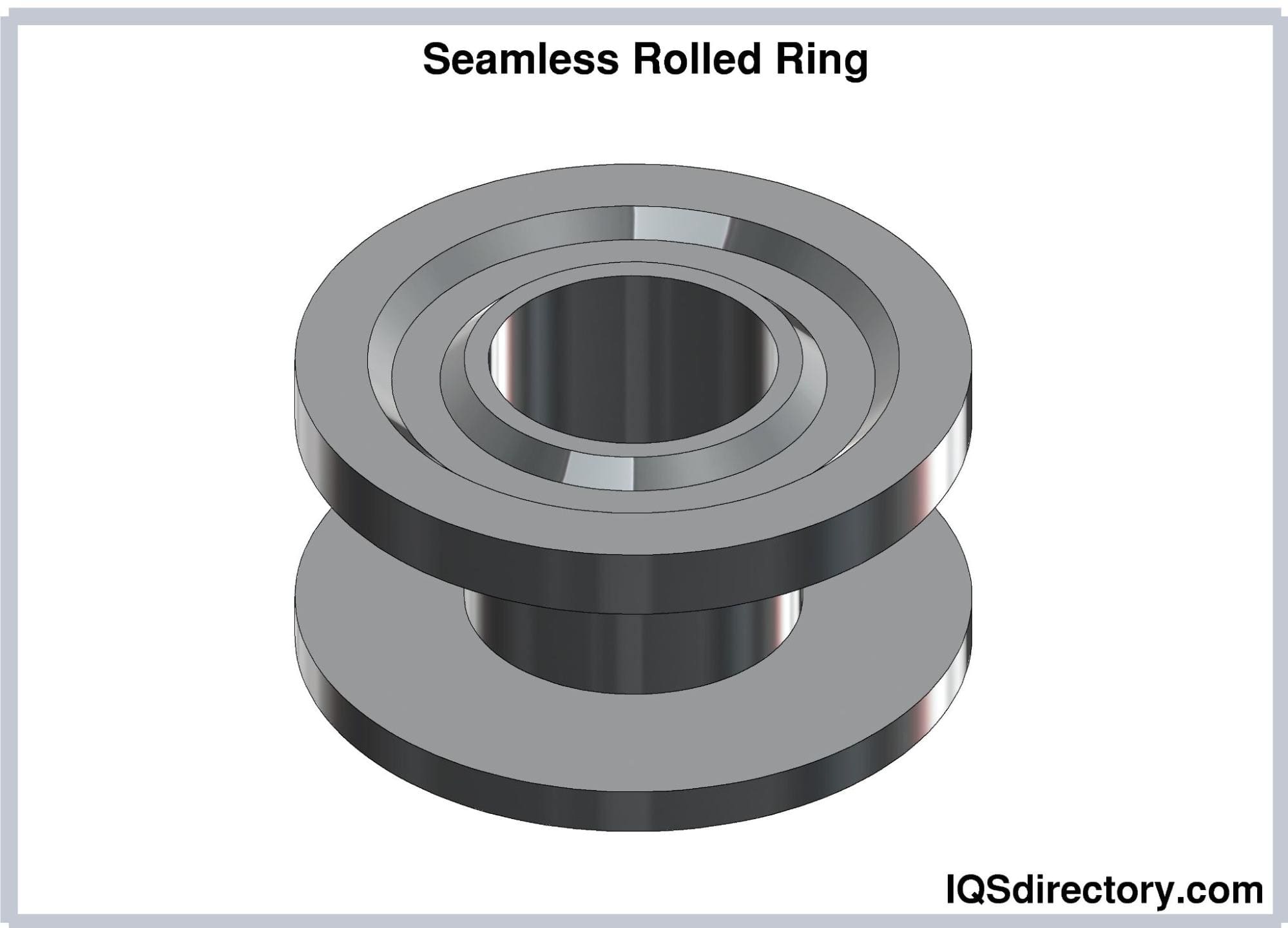
Rolled ring forging techniques are categorized according to the orientation and movement of the rolling process, which can be radial, radial-axial, horizontal, or vertical. Each rolling method uniquely deforms the metal workpiece to produce specific shapes, metallurgical grain structures, and mechanical properties. These forging techniques are essential for manufacturing a wide array of ring profiles used in critical applications, such as flanges, sheaves, bearing races, gear blanks, and anti-friction rings, across industries like aerospace, power generation, oil & gas, and automotive manufacturing.
Radial axial ring rolling, sometimes referred to as precision ring rolling, is considered the classic and most versatile form of rolled ring forming. In this process, the main roll rotates while the mandrel squeezes the workpiece, operating idly due to friction at the contact surface. Synchronization between the upper and lower axial rollers—rotating at an inverse rate and retracting as the ring diameter expands—enables precise control over the final ring thickness and diameter. As the diameter increases, the upper conical axial roller slides toward the lower axial roller, resulting in controlled height reduction of the ring. Guide rollers are applied to the outer diameter for accurate circularity and dimensional control, which is essential for component stability in high-stress applications.
The radial-axial rolled ring forging process requires exact control of all three roller systems to ensure superior quality, superior concentricity, and optimal metallurgical integrity. This is commonly accomplished using a closed-loop system, which incorporates a sophisticated laser distance measuring sensor. This automation guarantees precise adjustments in real time, resulting in a forged ring that meets stringent industry tolerances for critical structural components such as turbine rings, wind power flanges, and transmission gear rings.
Radial rolled ring forging, also known as hot radial rolled ring (HRRR) forging, is a specialized method designed to efficiently manufacture medium-scale bearing rings, slewing rings, and seamless forged rings. During this process, the HRRR mill’s primary roller delivers both rotational motion and linear force, while the disengaged mandrel facilitates passive ring rotation. Guide rollers, positioned at the exit of the main roller, provide essential control over the expanding ring profile, while a signal roller is situated on the opposite side for quality monitoring and consistency.
As the rolling progresses, the ring wall undergoes significant radial compression, expanding the metal tangentially and shaping the ring’s final geometry. This method is particularly effective for forming forged products with rectangular, grooved, or custom cross-sections, such as ten-shaped and stepped rings. Radial forging is favored in heavy equipment, bearing production, and automotive parts manufacturing due to its ability to achieve high structural homogeneity, improved impact resistance, and enhanced fatigue strength.
The vertical rolled ring forging method (VRRM), an advanced alternative to traditional horizontal rolled ring forging, utilizes a vertical orientation to accommodate larger ring diameters and complex shapes. In a VRRM setup, two main rollers, a mandrel, and several restraining rollers operate in concert. The main roller axles are set at an angle—typically 20 to 30 degrees from horizontal—and are powered by high-torque electric motors. The mandrel, mounted on a hydraulically controlled lifting frame, is raised and pressed into the ring to shape it continuously as forming progresses. Strategically positioned restraining rollers provide essential support, maintaining roundness and preventing ring distortion during the forging process.
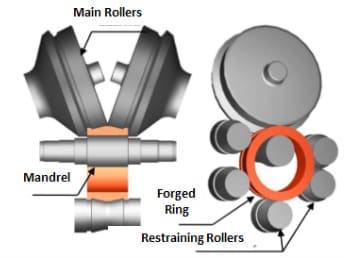
Vertical ring rolling machines are particularly valued in industries that require extra-large seamless rings, such as aerospace, wind energy, pressure vessel manufacturing, and heavy machinery. They offer significant advantages, including minimized machining allowances, improved material yield, and superior isotropic mechanical properties.
Horizontal rolled ring forming is the most traditional and widely practiced method in the forged ring manufacturing industry. In this approach, the workpiece is positioned radially against a mandrel on the ring’s inner side to apply pressure, refining the ring wall and establishing the desired diameter. Axial rollers—placed above and below or at the top and bottom—exert precise control over the ring’s height, ensuring tight tolerances and symmetry throughout the forging process. Centering rollers engage as idle elements, operating through the movement of the forged ring itself, and are critical for maintaining both surface smoothness and perfect roundness.
This method is commonly employed for producing seamless rolled rings of various dimensions, used in high-stress assemblies such as gear blanks, pressure vessel components, valve bodies, and rotary couplings. Its versatility supports a broad range of applications where mechanical strength, high durability, and consistent metallurgical grain flow are required. The adaptability of horizontal forging allows manufacturers to meet demanding customer specifications, reduce lead times, and achieve cost-effective production for both standard-sized and custom forged rings.
When selecting a rolled ring forging method, key factors to consider include ring diameter, material type (such as stainless steel, alloy steel, carbon steel, or specialty superalloys), desired mechanical properties, production volume, and industry compliance standards. By understanding the unique advantages and applications of each forging process, buyers can make informed decisions to ensure optimal product performance, cost efficiency, and resistance to fatigue and corrosion in their finished components.
Rolled ring forging is a metalworking process that forms seamless rings by upsetting, piercing, heating, and rolling a pre-shaped metal workpiece. This process enhances the metal’s grain structure, producing high-strength components for critical industrial applications.
Industries such as aerospace, oil and gas, power generation, heavy equipment, automotive, mining, and marine often specify seamless rolled rings for components requiring strength, durability, and reliable performance under high stress.
Rolled ring forging offers superior grain flow, high mechanical strength, minimal raw material waste, cost efficiency, and the ability to manufacture a broad range of sizes and custom shapes from various alloys.
The forging process aligns and refines grain flow through repeated working, particularly during upsetting and rolling, which removes voids and strengthens fatigue resistance for demanding environments.
Methods include radial, radial-axial, horizontal, and vertical rolled ring forging. Each approach offers unique benefits for achieving specific shapes, grain structures, and tolerance requirements in custom or large-diameter rings.
Yes, vertical rolled ring forging enables the production of extra-large seamless rings, meeting performance criteria for wind energy, aerospace, and pressure vessel applications.
Numerous machines are available for rolled ring forging, playing a crucial role in modern industry. Rolled ring forging enables the efficient production of high-strength, seamless, and near-net-shape rings essential for critical applications in aerospace, energy, and automotive sectors. Below, we explore several prominent brands of machines utilized for rolled ring forging:
The RAW series from SMS Group is renowned for its sophisticated automation and precise control systems, delivering high throughput and accuracy in the production of rolled rings.
Siempelkamp’s RingRoller machines are engineered for rolled ring forging, featuring cutting-edge hydraulic systems, CNC controls, and versatile handling for various ring sizes and materials.
Ajax-CECO’s RRG (Rolled Ring Generator) is a versatile machine designed for rolled ring forging, boasting advanced control systems, high forming force, and customizable options to accommodate different ring sizes and materials.
Forging Equipment Solutions provides ring rolling machines for rolled ring forging, offering advanced controls, robust construction, and the ability to produce high-quality rings with precision and efficiency.
Scot Forge’s ring rolling mills are designed for rolled ring forging, providing precise control, effective material use, and the capability to create seamless, symmetrical rings with excellent mechanical properties.
Note that specific models, features, or components may have evolved since this information was provided. For the most current details on the latest models and capabilities, consult the manufacturers or industry resources.
The seamless rolled ring forging process accommodates a variety of materials, such as carbon steel, stainless steel, alloyed steel, Waspaloy, Inconel, and Hastelloy X. This method is known for its speed and cost-effectiveness in producing products with superior ductility, impact resistance, and fatigue strength.
The selection of metals for a project is determined by its intended use. Different metals offer distinct characteristics and properties, making them suitable for specific applications based on the required strength and durability.
Carbon steel is used for applications that do not require the strength and cost of stainless steel. The rolled ring forging process enhances the strength of the steel, which makes it more durable. The results of rolled ring forging of carbon steel forces porosity from the metal and creates a consistent grain flow. Unlike other ring manufacturing processes, the rolled ring process forms carbon steel to meet exacting tolerances to provide high quality performance.
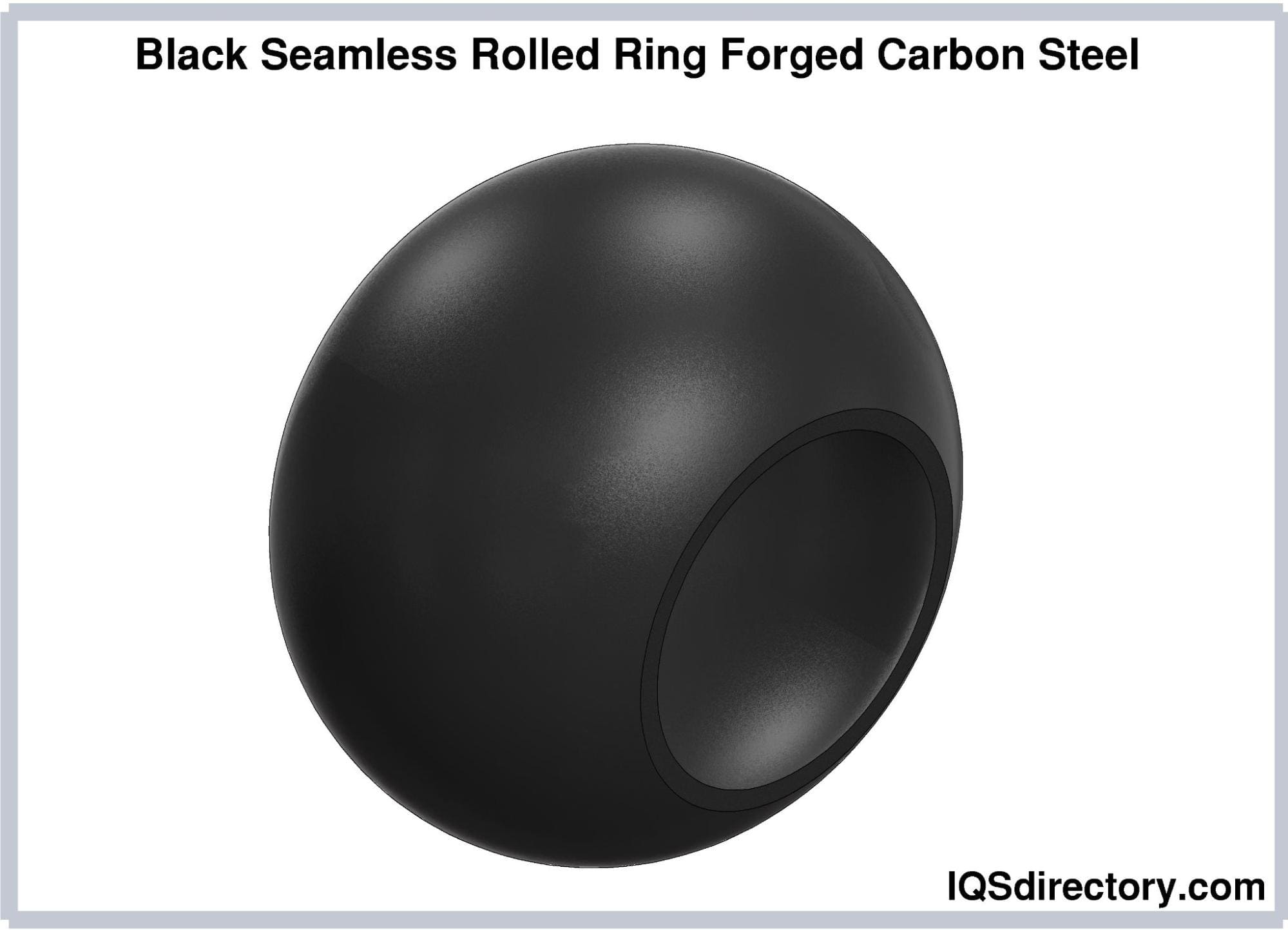
Alloy steels are created by blending various metals to produce a highly durable form of steel. The properties such as quality, strength, and resilience of alloy steel are influenced by the specific combinations of these metals. Carbon is frequently added to enhance the steel’s strength, with higher carbon levels resulting in increased hardness and reduced workability. It is primarily added when higher tensile strength is required.
Common metals combined with steel include:
The alloy steel grades commonly utilized in rolled ring forming include:
Rolled rings made from alloy steel can weigh anywhere from ten pounds to several thousand pounds, with variations depending on diameter and ring thickness. Various post-processing treatments can be applied to alloy steel to improve its durability and extend its lifespan.
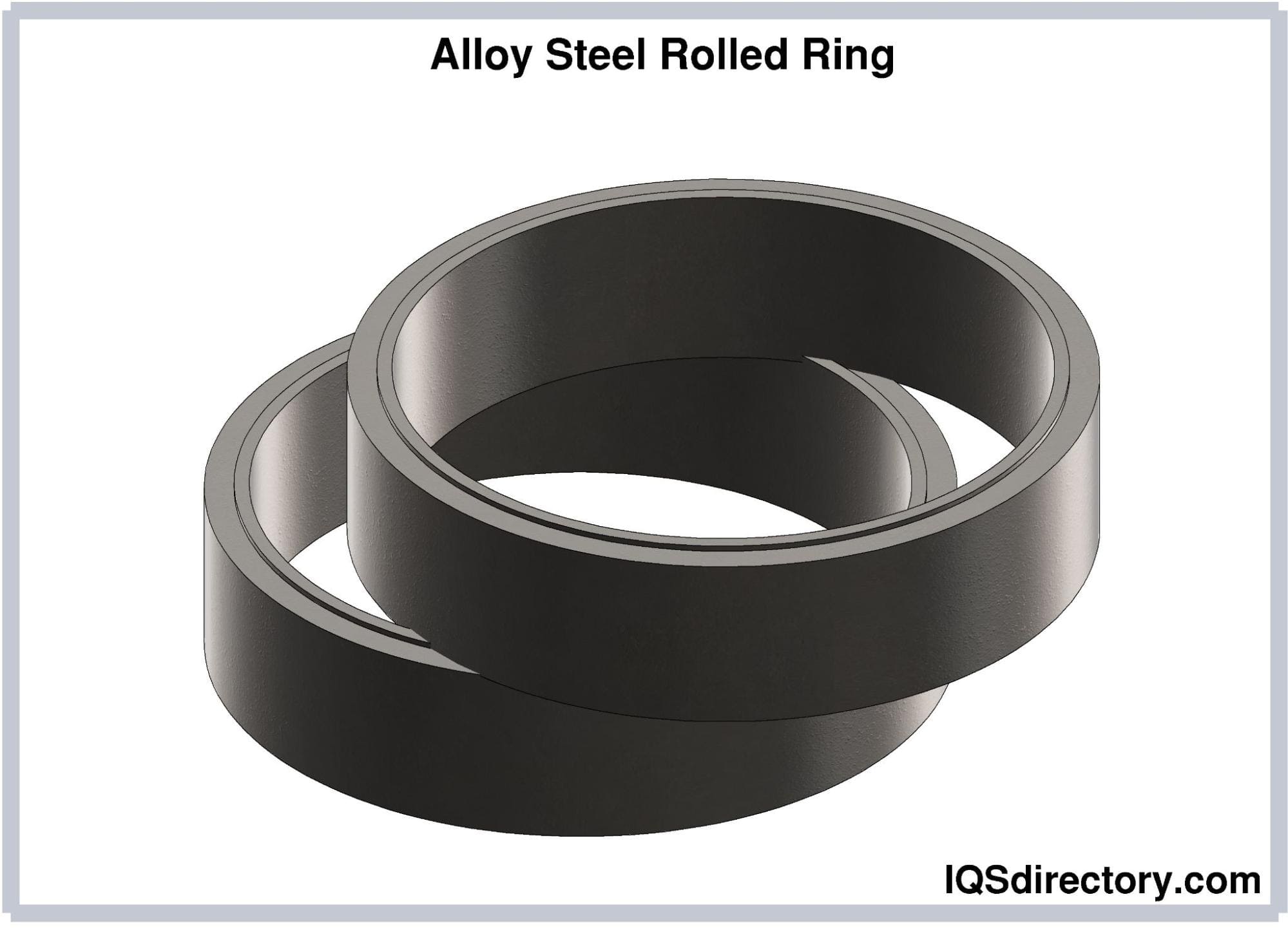
Stainless steel is an obvious choice for use in rolled ring forging due to its exceptional strength, corrosion resistance, ability to be recycled, and long lifespan. Of the many selections of metals, stainless steel is the most popular and widely used.
Stainless steel is an iron-based alloy containing at least 10% chromium. Its distinctive properties are attributed to the chromium-rich oxide layer that forms on its surface. The term "stainless steel" refers to a broad range of metal grades, each with its own specific alloy composition.
Common grades of stainless steel used in rolled ring forging include A 182 and several grades from the 300 and 400 series. In addition to its strength and durability, stainless steel contributes to an attractive finish in the final rolled ring products.
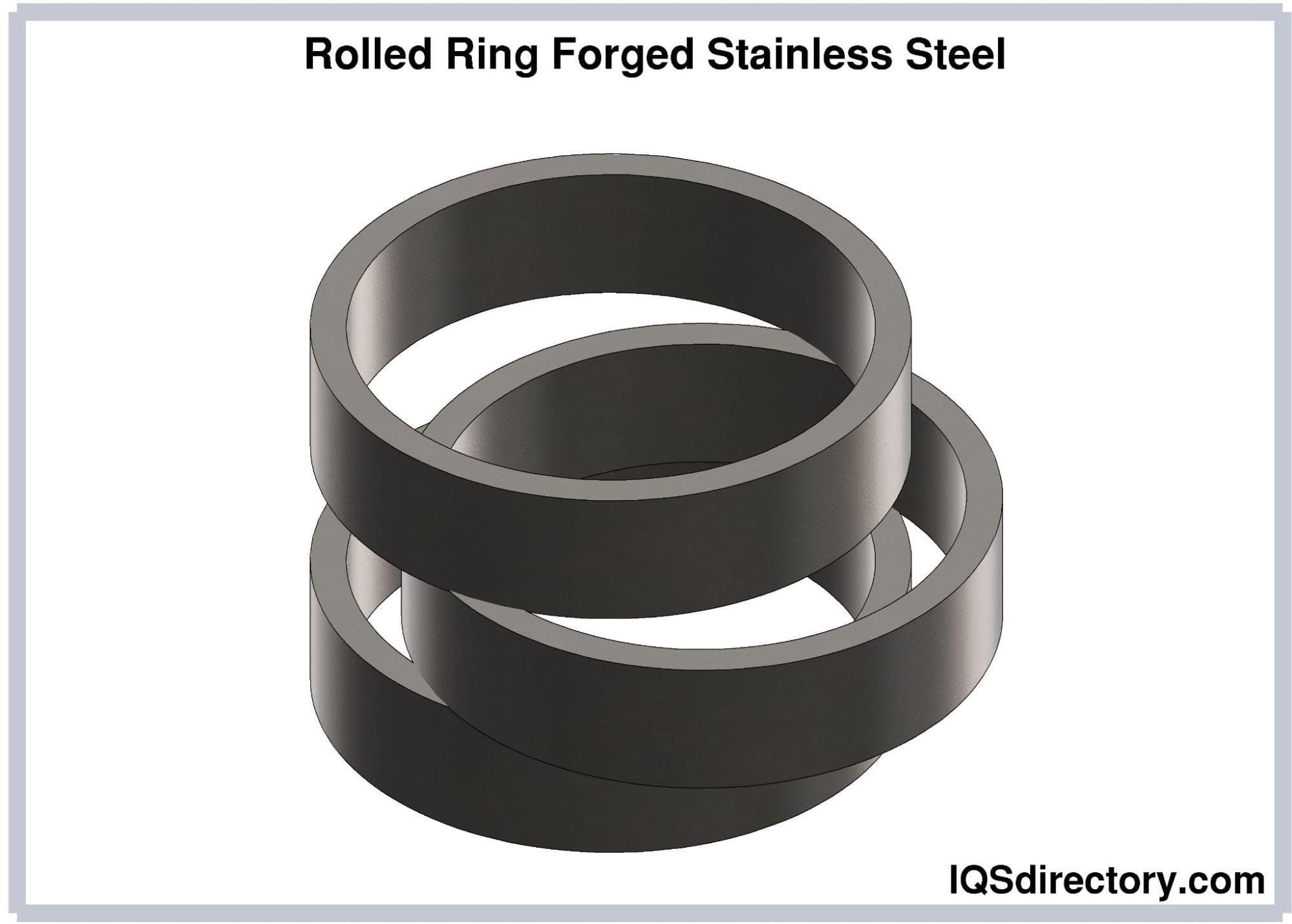
Aluminum alloys offer several advantageous properties that make them well-suited for seamless rolled ring forging. Their notable tensile strength, toughness, and fatigue resistance facilitate the shaping of aluminum with an internal structure and circumferential grain flow. Additionally, aluminum’s superior surface finish is notably smooth.
Pure aluminum is seldom used in production unless corrosion resistance is prioritized over strength. To enhance the hardness and durability of aluminum, various alloys are incorporated into the rolled ring forging process.
Grades of aluminum alloys used in rolled ring forging include:
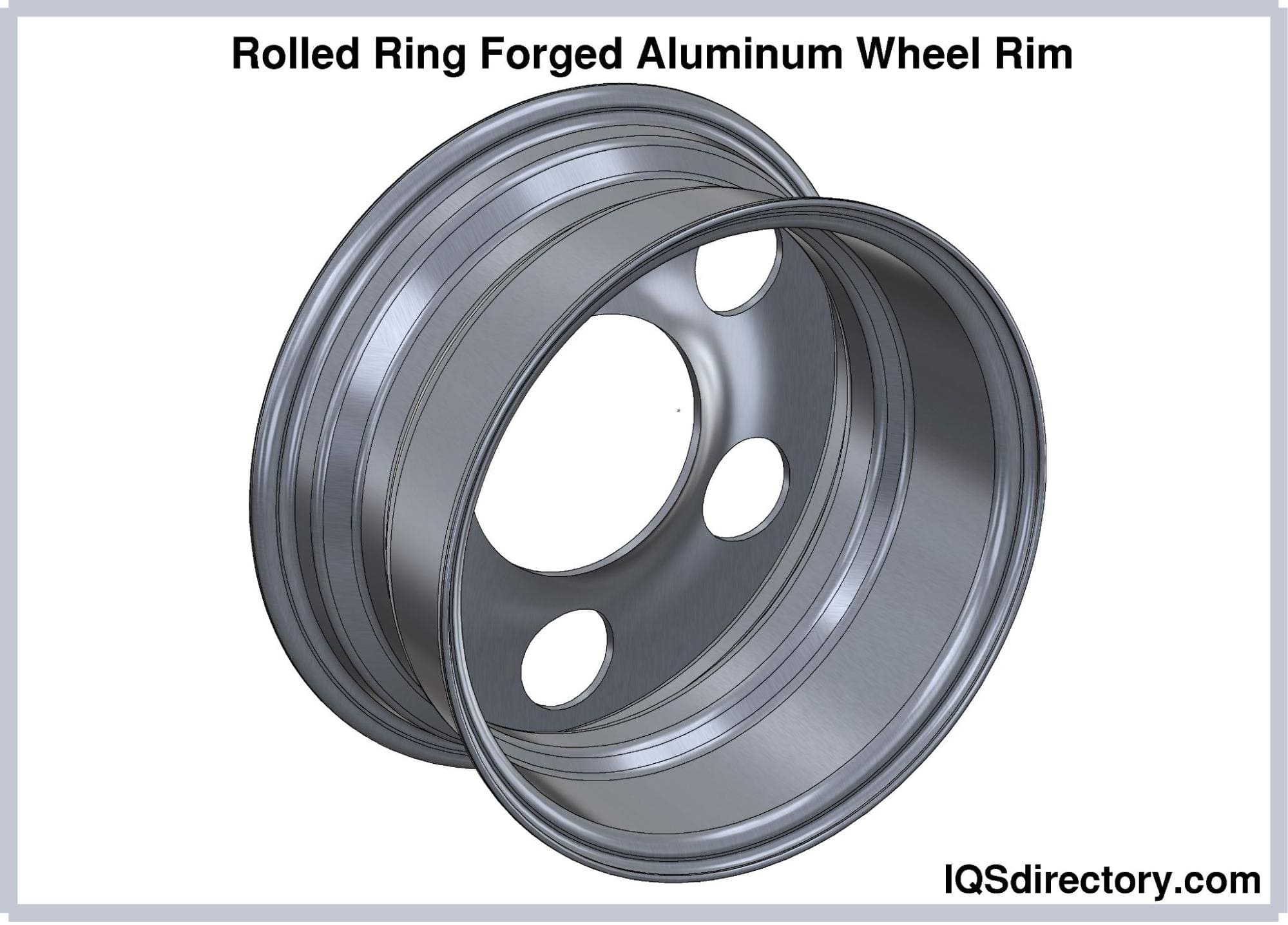
Titanium is lighter than steel but has an exceptional strength-to-weight ratio with corrosion resistance. It is a silvery-white metal protected by an oxide covering, enabling it to withstand acids and chemicals. In addition, the strength of titanium makes it capable of resisting erosion and metal fatigue. Though titanium has an excellent strength-to-weight ratio, it is much lighter and less dense than alloy steel.
Rolled ring forging enhances the formability of titanium, minimizing its tendency to spring back and reducing the likelihood of structural defects.
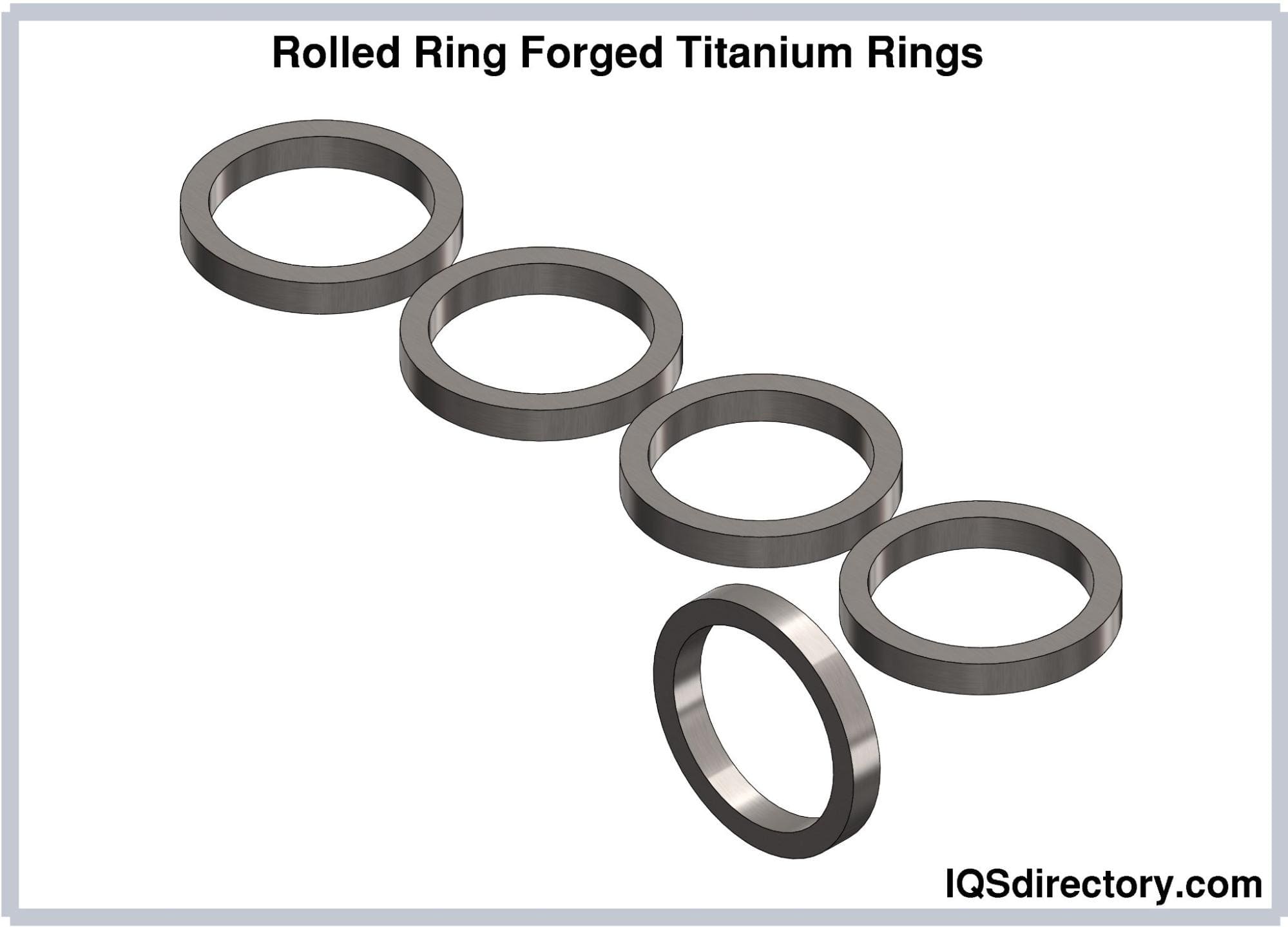
Hastelloy X is an austenitic nickel-based alloy composed of nickel, chromium, and iron, with a small amount of cobalt. It is renowned for its exceptional strength at high temperatures and resistance to corrosion. Hastelloy X’s properties include excellent resistance to heat, oxidation, chloride corrosion, and both reducing and carburizing environments.
This alloy is favored for rolled ring forging due to its ductility and suitability for cold working, as well as its ease of machining when in its annealed state.
Inconel is an austenitic nickel-chromium alloy known for its resistance to oxidation and its ability to maintain structural integrity under extreme temperatures and harsh environments. It also offers exceptional wear and corrosion resistance. With its high tolerances, Inconel is well-suited for specialized industries that demand precision and accuracy.
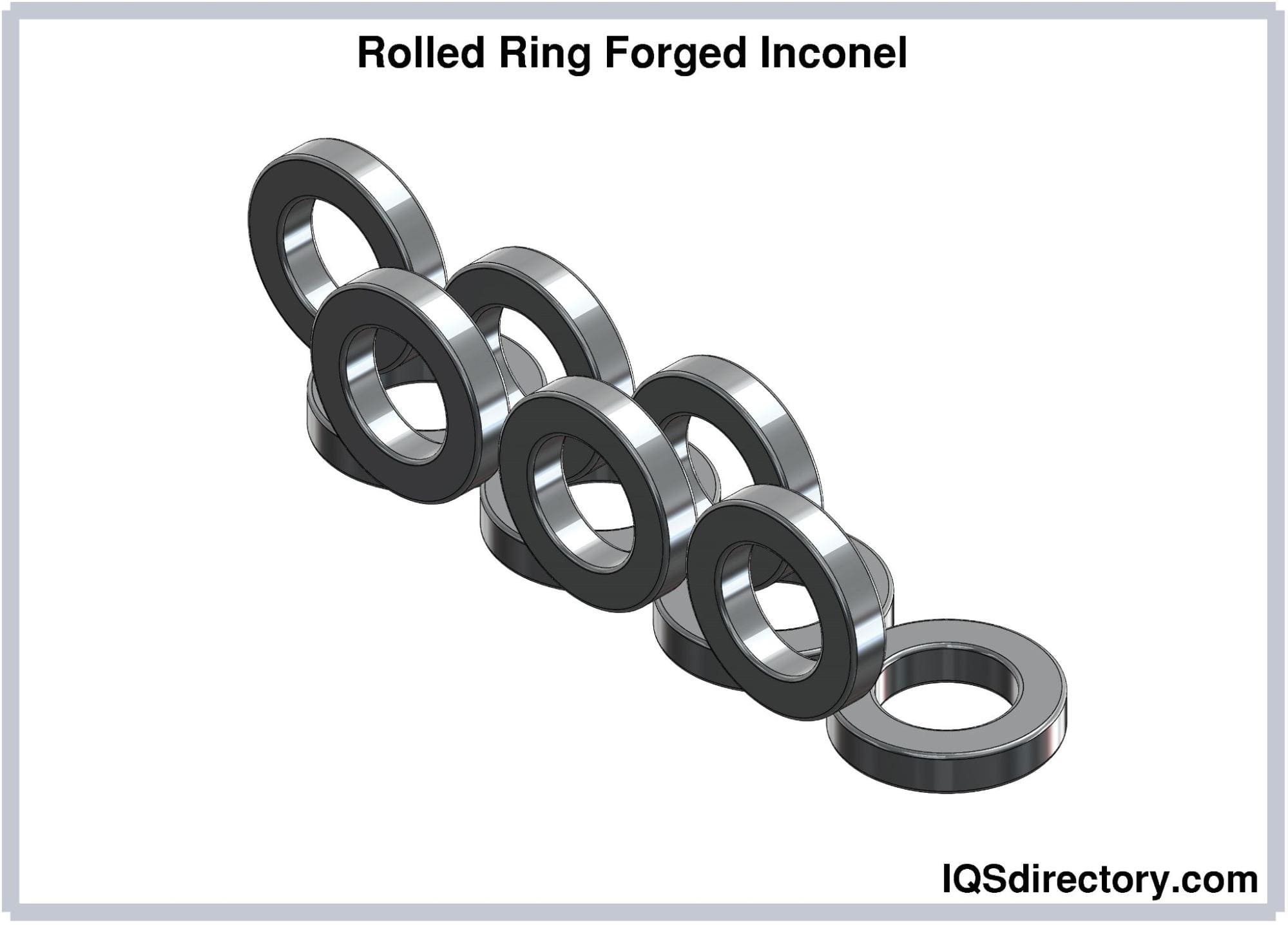
Seamless rolled forged rings are integral components in various industries, forming the backbone of critical machinery and equipment. Unlike other metal-forming processes that can weaken metals, seamless rolled rings are robust and durable since they originate from a solid metal piece. They are engineered to endure corrosion, high temperatures, and harsh environments.
The meticulous manufacturing process for seamless rolled rings ensures products with high tolerances that meet precise specifications. Each finished component is designed to fit its intended application exactly.
In oil extraction, transporting the oil through pipelines presents challenges, particularly regarding pipe connections. Concerns about leaks at these connections are addressed by using seamless rolled forged rings. These rings, produced to stringent specifications, ensure robust, leak-proof connections.
The hydraulic fracturing (fracking) process imposes significant stress on its components and connectors. Seamless rolled rings are ideal for this application due to their ability to withstand extreme stress without cracking, corroding, or failing at high temperatures. Their durability ensures dependable performance throughout the fracking process.
Gearboxes play a crucial role in aircraft operations, affecting both passenger and pilot safety. Constructed from highly durable metals and alloys, gearboxes are produced using the seamless rolled ring forging process to achieve high functionality and longevity.
In flight operations, the reliability of gearboxes is paramount to avoid mechanical failures. Seamless rolled ring forging creates lightweight yet strong gears and bearings essential for jet engines and helicopters, ensuring they meet rigorous aircraft standards while maintaining resilience and dependability.

Seamless rolled ring forged components are integral to every part of a wind turbine, making them crucial for turbine construction. Their precision, durability, and strength make seamless rolled rings the preferred choice for ensuring that wind turbines operate efficiently and reliably.
The main shaft of a wind turbine is engineered to endure constant fluctuations in both axial and radial loads. Seamless rolled rings function as bearings to help the shaft manage these varying forces effectively.
Wind turbines experience continuous wear and tear, which is why seamless rolled ring bearings are essential. These bearings are designed to handle the stress, preventing potential breakdowns and energy losses.
Additional components of wind turbines made with seamless rolled ring forging include flanges for connecting tower sections, gears, and couplings that manage the torque between the gearbox and the generator.
Vehicle components must withstand substantial loads and stress, requiring parts that can endure these conditions to ensure proper functioning. Seamless rolled ring forged components are integral to various vehicle systems, including trucks and cars. Parts such as crankshafts, camshafts, clutches, braking systems, gears, and couplings are manufactured using this process. These high-quality components are designed to handle frequent wear, pressure, and stress encountered during daily use. They offer a combination of lightness, versatility, and resistance to continuous torque.

The types of rolled ring forging are categorized by the metals used, including stainless steel, alloy steel, and carbon steel. These general categories represent a broader range of metals that can be forged using the rolled ring process. Strength and toughness are essential qualities for metals shaped through rolled ring forging due to the significant stress applied to the workpiece.
Modern manufacturing demands the production of strong, durable products with extended lifespans. Seamless rolled ring forging is a process that meets these requirements, producing robust components and parts designed to endure various conditions.
Seamless rolled ring forging is versatile and can produce a wide range of bearings, gears, couplings, and connectors from various durable metals. The seamless nature of the process contributes significantly to the strength and longevity of the components.
The popularity of rolled ring forging stems from the exceptional strength of its forged parts. In extreme conditions where other components might fail, rolled ring forged parts maintain their durability and performance, even at very high temperatures. This resilience makes them ideal for use in jet engines, windmills, paper mills, and oil refineries.
The high temperatures involved in rolled ring forging result in grain patterns that impart extraordinary strength and resistance to the final products.
Despite the complexity of the rolled ring forging process, the final products are surprisingly cost-effective. In fact, rolled ring forging is often more economical compared to other forging and fabrication methods. Unlike seamless rolled ring forging, alternative processes typically involve extensive handling and machining, which can drive up costs.
Additionally, low tooling costs and quick setup times contribute to reduced production expenses. The use of a single piece of metal for workpieces minimizes waste, enhancing production efficiency.
Seamless rolled ring forged parts can be made from a wide range of metals, including high-tensile stainless steel and various copper alloys. This versatility allows customers and producers to select the exact material needed for their specific application, ensuring optimal performance and suitability.
The manufacturing process of seamless rolled ring forging involves processing metals near or at their recrystallization point during shaping and formation. This approach ensures that the final product can withstand and endure high-temperature environments, thanks to the careful handling and treatment of the metals throughout the process.

Aluminum forging is a method for processing aluminum alloys using pressure and heat to form high strength, durable products. The process of aluminum forging involves pressing, pounding, and...
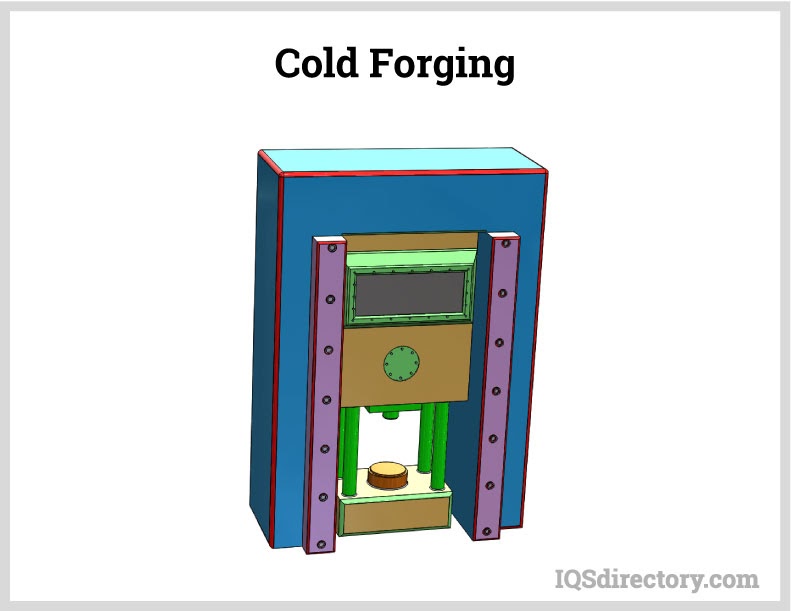
Cold forging is a metal shaping & manufacturing process in which bar stock is inserted into a die and squeezed into a second closed die. The process, completed is at room temperature or below the...
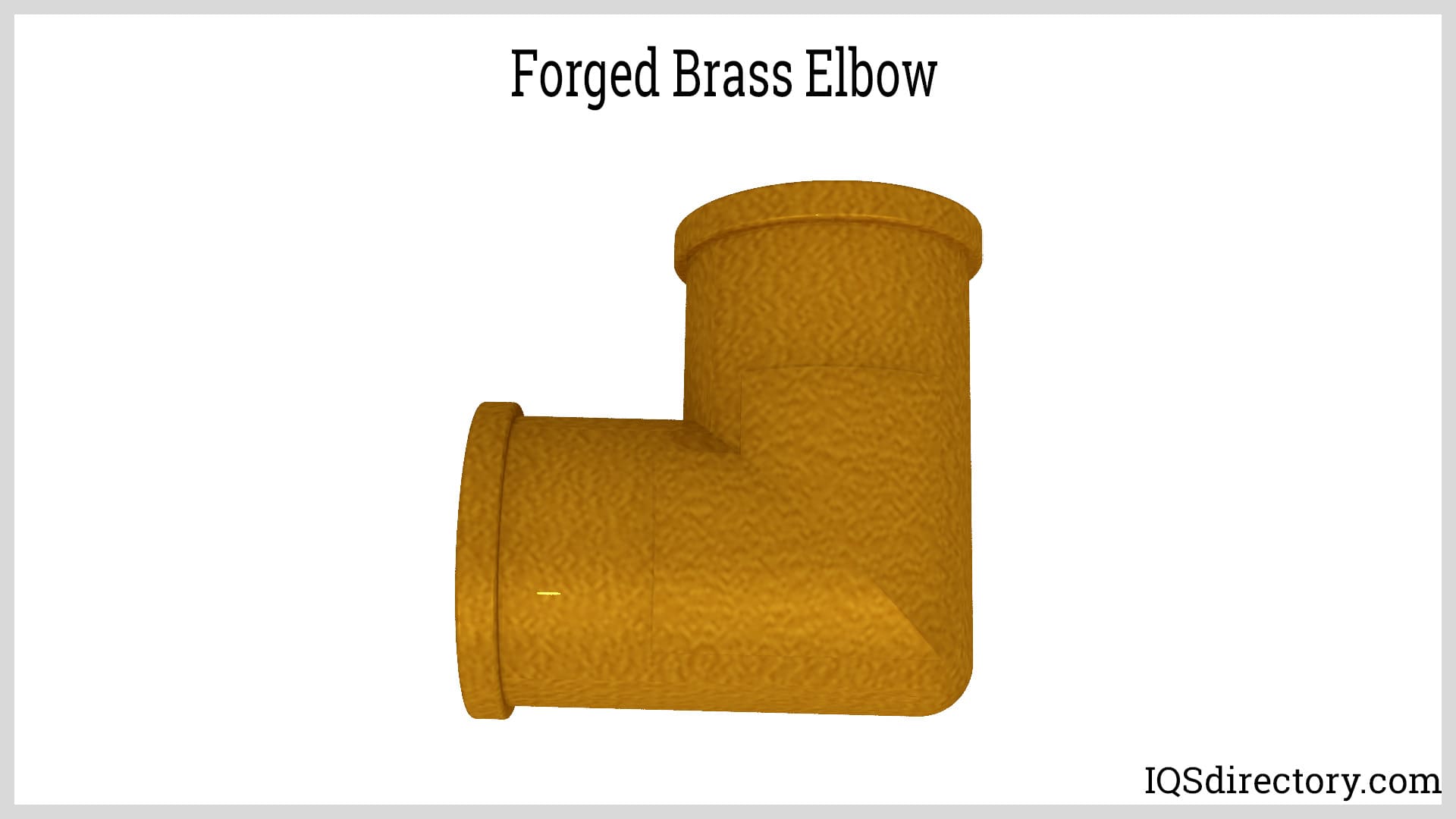
Copper and brass forging is the deformation of copper and brass for the purpose of manufacturing complex and intricate shapes. The temperature at which copper and brass are forged is precision controlled and...

Forging is a metal working process that manipulates, shapes, deforms, and compresses metal to achieve a desired form, configuration, or appearance outlined by a metal processing design or diagram...
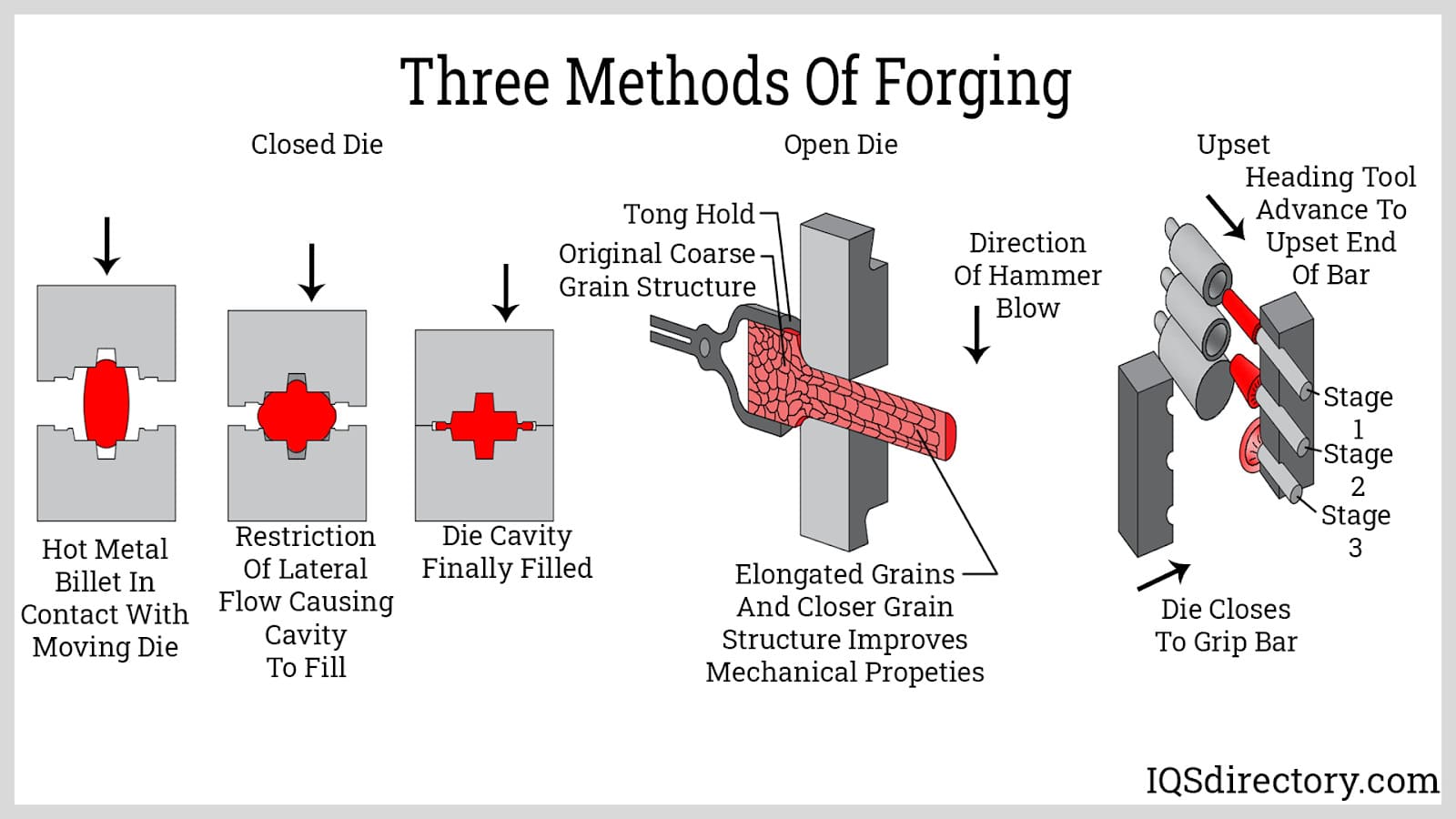
In this article, there are key terms that are typically used with open and closed die forging and it is necessary to understand their meaning. Forging is a process in manufacturing that involves pressing, hammering, or...
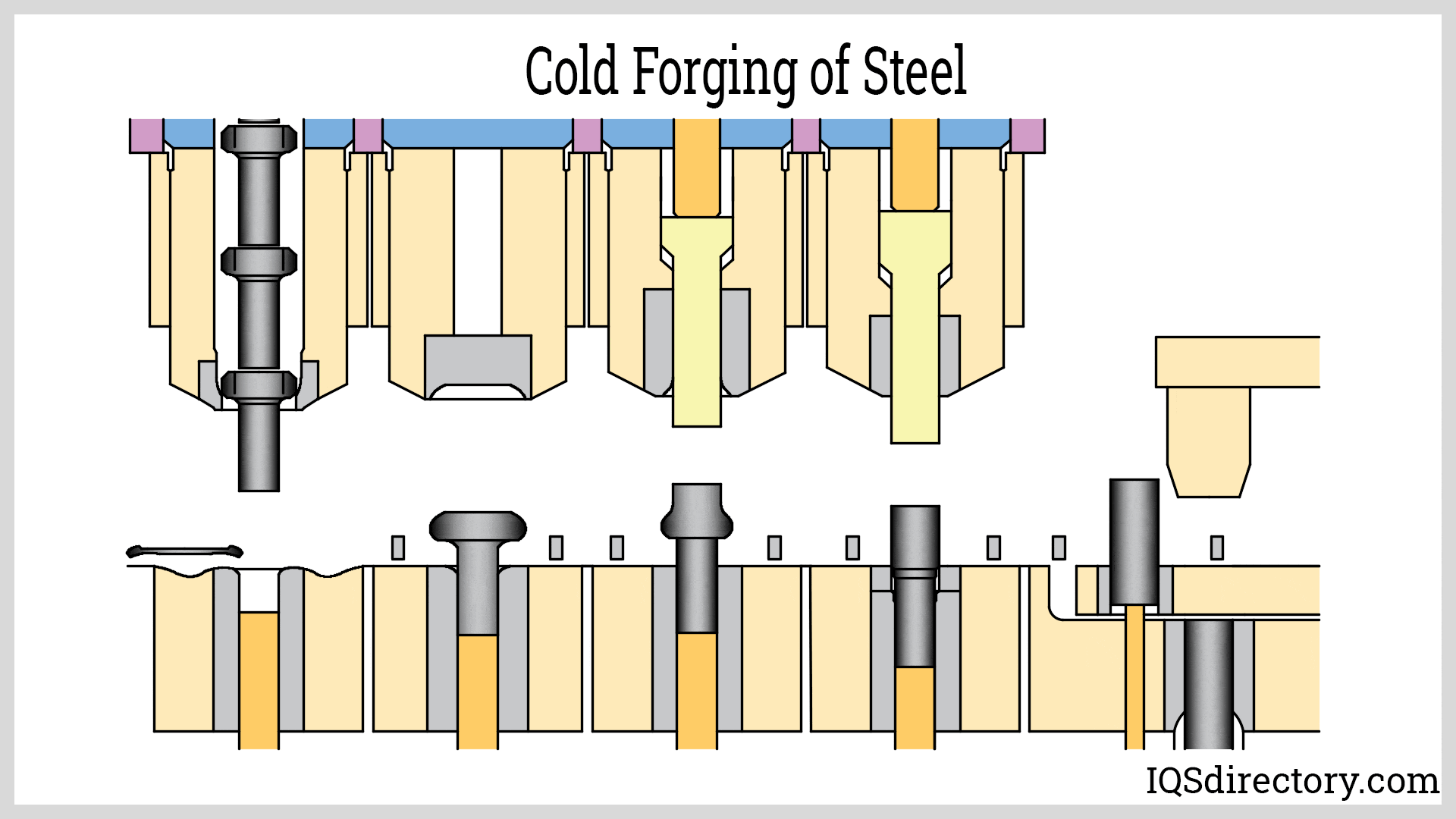
Forging steel is a manufacturing process used to shape steel by using localized compressive forces, which include hammering, pressing, and rolling. It is a widely used method for producing high quality steel products...
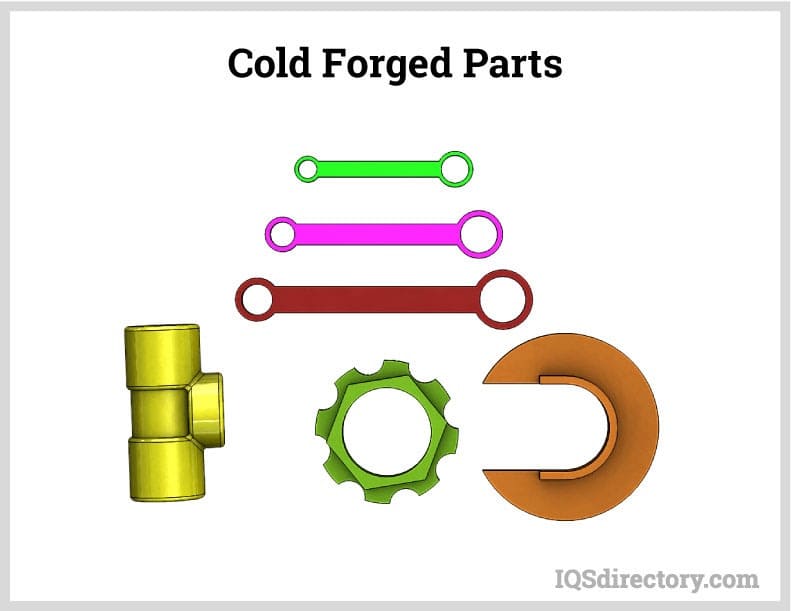
The ancient art of forging falls into two distinct categories – hot and cold where hot forging has been around for centuries while cold did not begin until the industrial revolution of the 19th Century. Though they are quite different ...

Aluminum casting is a method for producing high tolerance and high quality parts by inserting molten aluminum into a precisely designed and precision engineered die, mold, or form. It is an efficient process for the production of complex, intricate, detailed parts that exactly match the specifications of the original design...
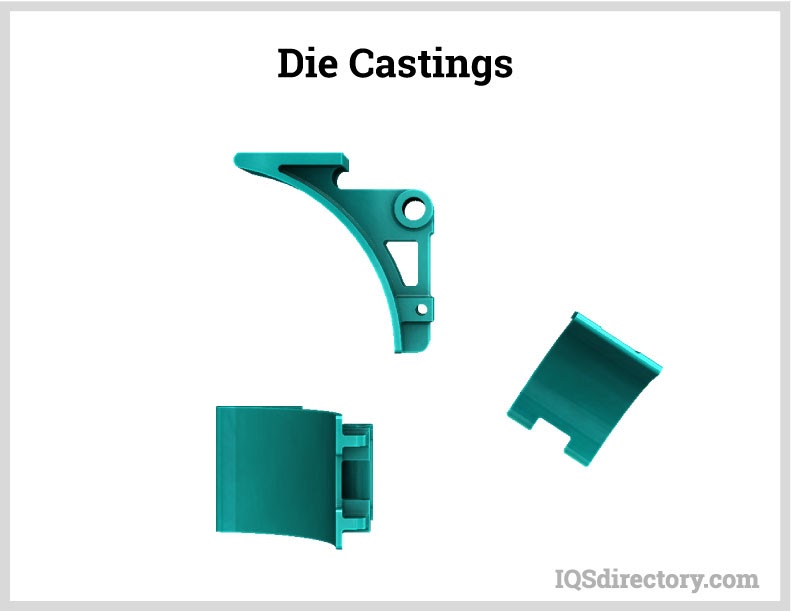
Die casting is a high pressure metal casting process that forces molten metal into a mold. It produces dimensionally accurate precision metal parts that have a flawless smooth finish...
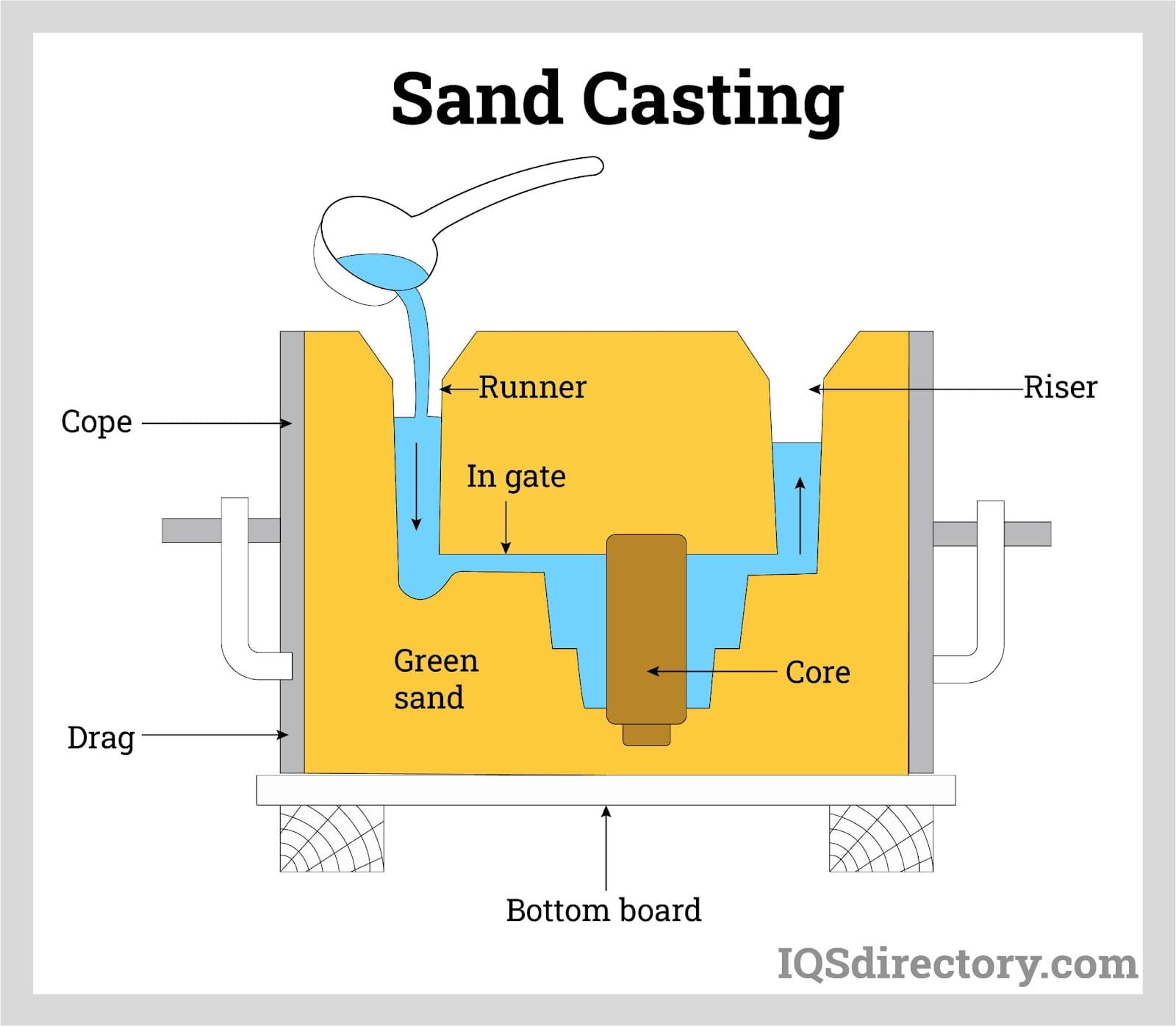
Sand casting is a manufacturing process in which liquid metal is poured into a sand mold, which contains a hollow cavity of the desired shape and then allowed to solidify. Casting is a manufacturing process in which...
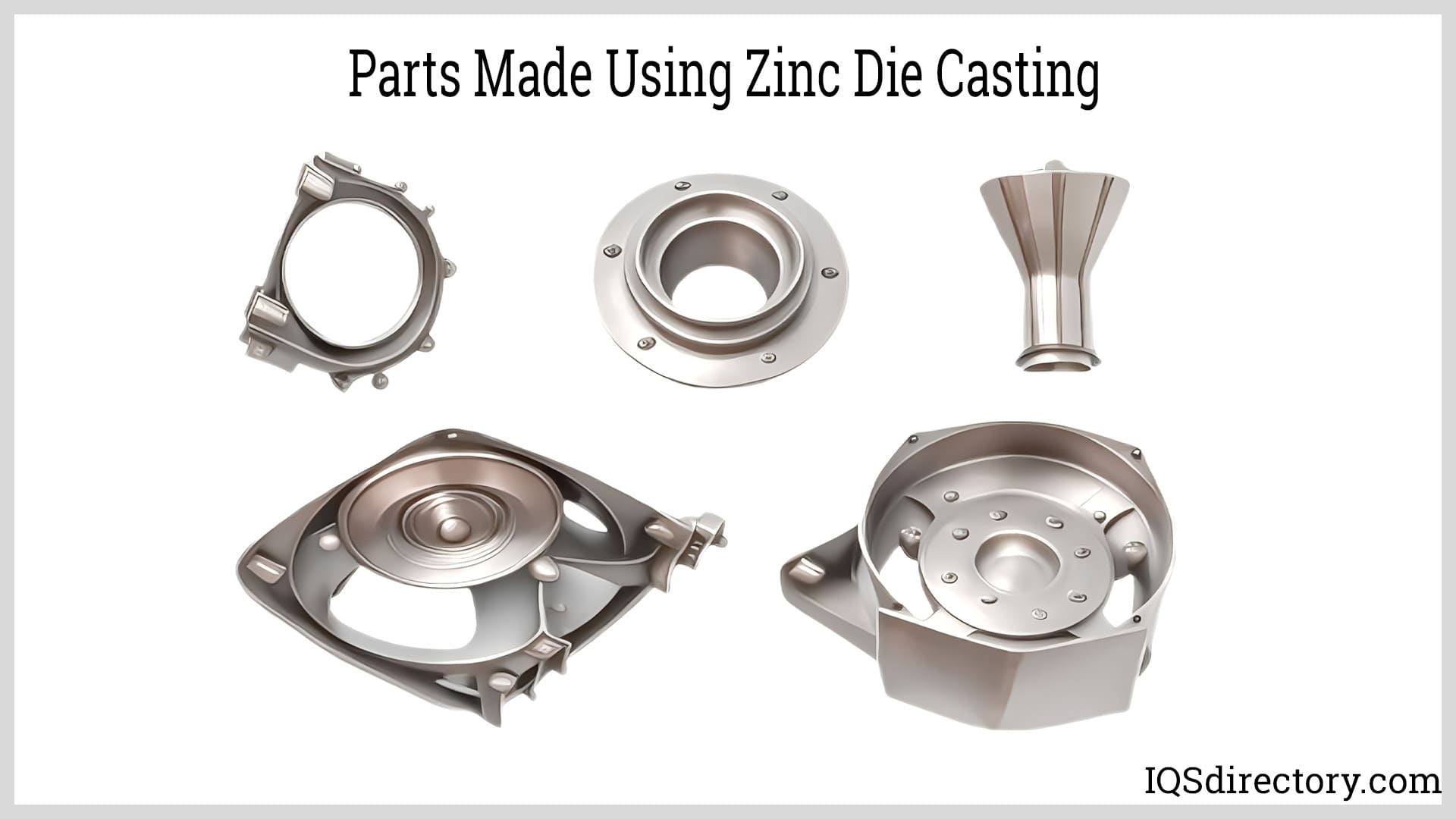
Zinc die casting is a casting process where molten zinc is injected into a die cavity made of steel that has the shape, size, and dimensions of the part or component being produced. The finished cast zinc product has...
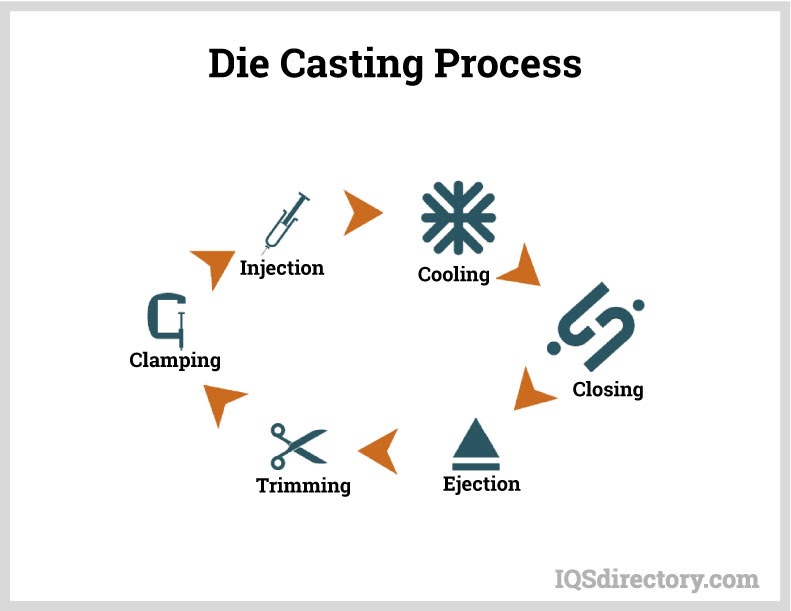
The casting process is an ancient art that goes back several thousand years to the beginning of written history. The archeological record has finds that document the use of the casting process over 6000 years ago around 3000 BC or BCE...